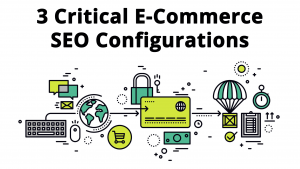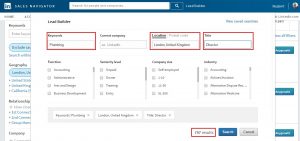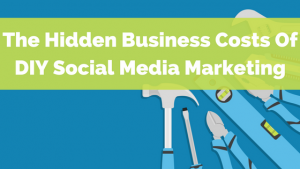
In this digital world, there’s no denying that your website is your company’s most valuable marketing asset. Consider the data:
- More than 80% of buying decisions begin online
- Purchasers review 10+ online sources of data before buying
- 66% of people who see an ad perform a mobile search as a result
- 90% of U.S. smartphone owners use their phone to access information used to purchase goods or services
- 87% of those smartphone owners take action (make a purchase, call a business, etc.) as a result of the information they find online
The average person gets 70% of the way through their purchasing process before they are willing to speak to or meet with a salesperson. What are they doing in that time? Self educating. When people realize they need something, whether that something is a new car or a new pair of shoes or the services of a consulting company, they go online and learn everything they can about the good or service they are considering buying. Eventually, that online research will lead them to your website and that is your chance to make a great first (and hopefully second and third, etc.) impression.
If your website is confusing, hard to use, or slow to load, your potential buyer can easily go to your competition and boom – you’ve lost a sale. Just as it is important to treat potential customers well when you interact with them in person or over the phone, the experience they have with your website can make or break your sale.
Think of your website as your virtual storefront. Your goal should be to enhance the prospect’s experience when they visit your site, not cause frustration. While this may seem like common sense, there are still plenty of websites our there that annoy the heck out of the people that visit them.
If your website falls into any of these categories, it’s time to consider an update. You have been warned!
There is Too Much Text
The average user only reads 28% of the words on a page, so make them count. Start by paring down and only providing text where it’s needed. This isn’t always easy. Remember in college how it was always harder to write that 5 page paper than a 10 page paper? It was Mark Twain who famously said “‘I didn’t have time to write a short letter, so I wrote a long one instead.” If it was tough for Mark Twain, it will be even tougher for the rest of us, especially if you’re trying to edit your own copy. I always recommend asking a third party to review it for you. They’ll have a much easier time identifying information that can be cut out.
In addition to pairing down the amount of text, when you can, find opportunities to convey information in more dynamic and visual ways. Given that 65% of the population are visual learners, you will most likely be more successful in engaging your audience if you use icons, pictures, infographics, videos, charts and the like than if you say everything via text. Videos in particular can help to increase your conversion rates.
It Takes Too Long to Load
We want it, and we want it now. Instant gratification has become the new reality and, like it or not, our attention spans are now shorter than a goldfish. If your site doesn’t load in three seconds or less, not only will Google penalize you by pushing your site further down in search rankings, you can also say goodbye to 40% of users.
Site speed is something you should be checking on regularly, and it is easy to do this with free tools like Pingdom. If you don’t already have a plan in place to address site speed issues that may arise, start now and tackle the root cause of your slow load speed.
Making changes as simple as optimizing image sizes, limiting the number of download requests per page and installing a caching plugin (for WordPress websites) can dramatically reduce page load speed time. If you make these changes and still have trouble with site speed, take some time to research hosting companies that may be able to serve your site to users faster. Our favorite is WP Engine, which has drastically reduced the page load speed for both our own website and a number of our clients.
It Doesn’t Work on Phones and/or Tablets
This may be blunt, but how is it possible that you do not have a responsive website? It is 2015 and if your website doesn’t adapt the way it displays based on the type of device a visitor is using, you are going to get left in your competitors’ dust. When you consider that 60% of all Internet usage occurs on mobile devices, not having a responsive site means you are making it difficult for 60% of your visitors to find what they need. 60%! Need I say more?
Annoying Pop-Ups
People do NOT like pop-ups. According to WebMeUp:
- 70% of Americans say they get annoyed by irrelevant pop-up ads
- The #1 reason why people would block a site is annoying ads
- There are 2,000+ threads in the eBay community dedicated to annoying pop-ups
Pop-ups interrupt a visitor’s experience, and tend to feel pushy and/or spammy. You don’t want to bombard your visitor with something they aren’t interested in. That is a quick way to get them to leave your site.
Interestingly, despite all of the data showing how annoying people find pop-ups to be, there is also plenty of data to show that, when done right, they can increase conversion rates. If you must pursue pop-ups, consider delayed pop-ups that only appear after the user has been on your site for a significant portion of time, or has scrolled to a certain point within your content. If a user is interested enough to stick with your content, they are less likely to hit the back button when it comes to a pop-up ad.
Auto-Playing Video
No one I know stays on task at work 100% of the time. In fact, the average person can maintain concentration for a maximum of 45 minutes before their brain needs a break. And when that happens, you might wander over to Buzzfeed, Amazon, Facebook and eventually a random site with very loud, very obnoxious video content.
Busted!
Don’t let your website be the one that ruins off-task time for everyone. Take a cue from Facebook and keep your video content silent until your visitor decides they want to hear it and clicks play. When you opt for an opt-in policy, the video is still grabbing enough to engage, but it doesn’t get anyone in trouble.
Generic Stock Photos
The best marketing is all about authenticity. Even in the internet age, people still want to buy from people. Unfortunately, not every company invests the time and money to take original photographs for their website and the result is a proliferation of stock photos featuring generic looking, often multi-ethnic groups of people.
Stock photos are the worst! Why? Because you aren’t fooling anyone. That young, attractive blonde in the size two business suit giving a presentation on the random pie chart just doesn’t exist. I know that and your visitors know that.
Be authentic and be transparent. Your visitors want to know who you are. Use real images of your real office with your real employees. Give your visitors something of value – you! Stock photos are only relevant if they help to clarify something, and in most cases they don’t.
Plus, you don’t want to be caught with the exact same photo that your competitor is using on their site do you? Of course not! Authenticity wins every time.
Unable to Contact Customer Service
Every website has a “contact us” form, but wouldn’t you rather just call? Users want instant gratification, remember? Nothing can be substituted for good, old fashioned and straightforward contact information.
Don’t forgo a contact form on your site but, at the same time, be sure to also give users the ability to get in touch with you and get a response on their timeline – not yours.
What are your biggest website pet peeves? What gets you pushing the back button? Let us know in the comments.
(322)








